7.5 Viewing Server Properties
The Server Properties dialog box in the Management Console retrieves and displays information about the Dynamic File Services servers that you are managing.
7.5.1 Accessing the Server Properties
-
In the Management Console, connect to the DynamicFS server you want to manage.
-
In the left panel, select the server, then select > . You can also right-click the server, then select .
The Server Properties dialog box opens.
-
Continue with Section 7.5.2, Viewing General Server Information.
7.5.2 Viewing General Server Information
-
In the Server Properties dialog box, select the tab to view information about the server operating system and hardware:
Property
Description
System
The operating system and server time zone of the server.
Computer
Server processor and RAM on the server.
Domain
The fully distinguished name of the Active Directory domain, if the server is a member server or controller server in an Active Directory environment. For example: DC=novell,DC=com
Version
The release version of the Dynamic File Services software.
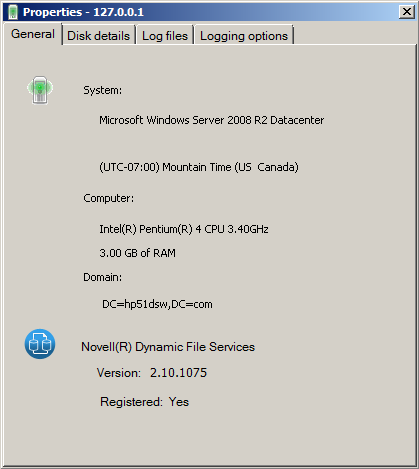
-
Continue with Section 7.5.3, Viewing Disk Details for the Server.
7.5.3 Viewing Disk Details for the Server
-
In the Server Properties dialog box, select the tab to view a list of disks on the server and the , , and of each disk.
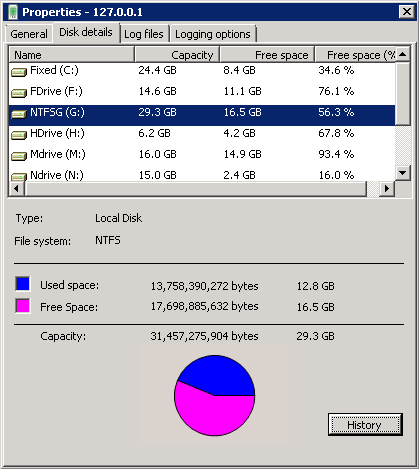
-
(Optional) For each disk, select the disk, then click to view the history of the disk capacity and used space.
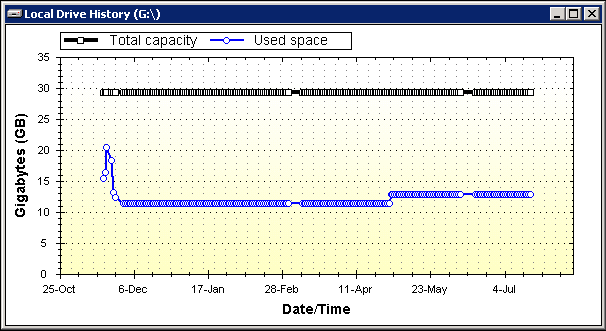
-
(Optional) Save the graphic display by right-clicking anywhere in a graphical area and selecting any of the following options:
-
Copy: Copies the selected graph as an image to the clipboard. Open a graphics editor, paste the image, and save the file.
-
Save Image As: Opens a Windows Save As dialog box where you can specify a location and file name for the image, select a file format, then save the file.
-
Page Setup: Set up the page orientation (portrait or landscape) and printer information for printing the graph.
-
Print: Print the selected graph.
-
-
Continue with Section 7.5.4, Viewing Log Files for the Server.
7.5.4 Viewing Log Files for the Server
-
In the Server Properties dialog box, select the tab to view log information for the following components on the target server:
-
Dynamic File Service component (DswMpcCore.log)
-
Standard Policy engine component (DswStandardPolicy.log)
-
Install utility (install.log)
-
Pair Check utility (DswPairCheck.exe)
-
File Inventory utility (DswInventory.exe)
Logs for the utilities are available after the utility has been run manually at least one time.
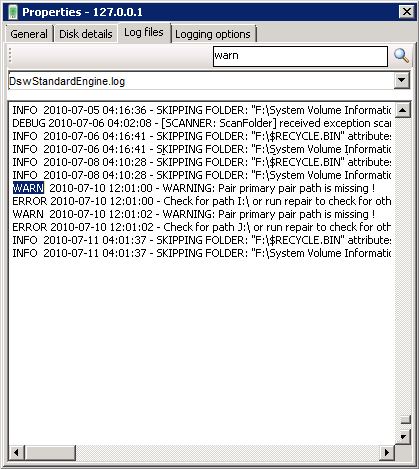
-
-
(Optional) Search for words in messages by using the Search feature. Type the word or characters, then click the Search icon to jump to each instance of the word in the log file.
-
Continue with Section 7.5.5, Viewing Logging Levels for the Server.
7.5.5 Viewing Logging Levels for the Server
-
In the Server Properties dialog box, select the tab to view the logging level settings for the Service and Standard Policy logs on the server.
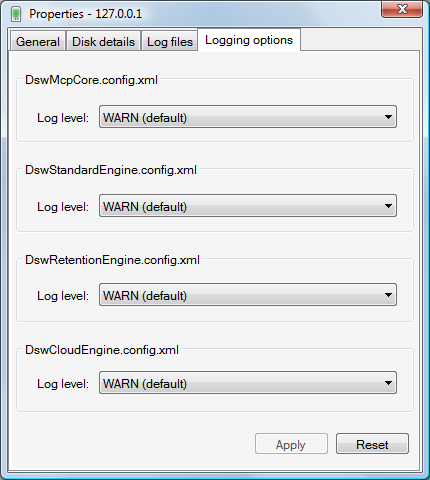
-
If you want to modify the logging levels, continue with Section 6.7, Configuring the Logging Level for Engines.